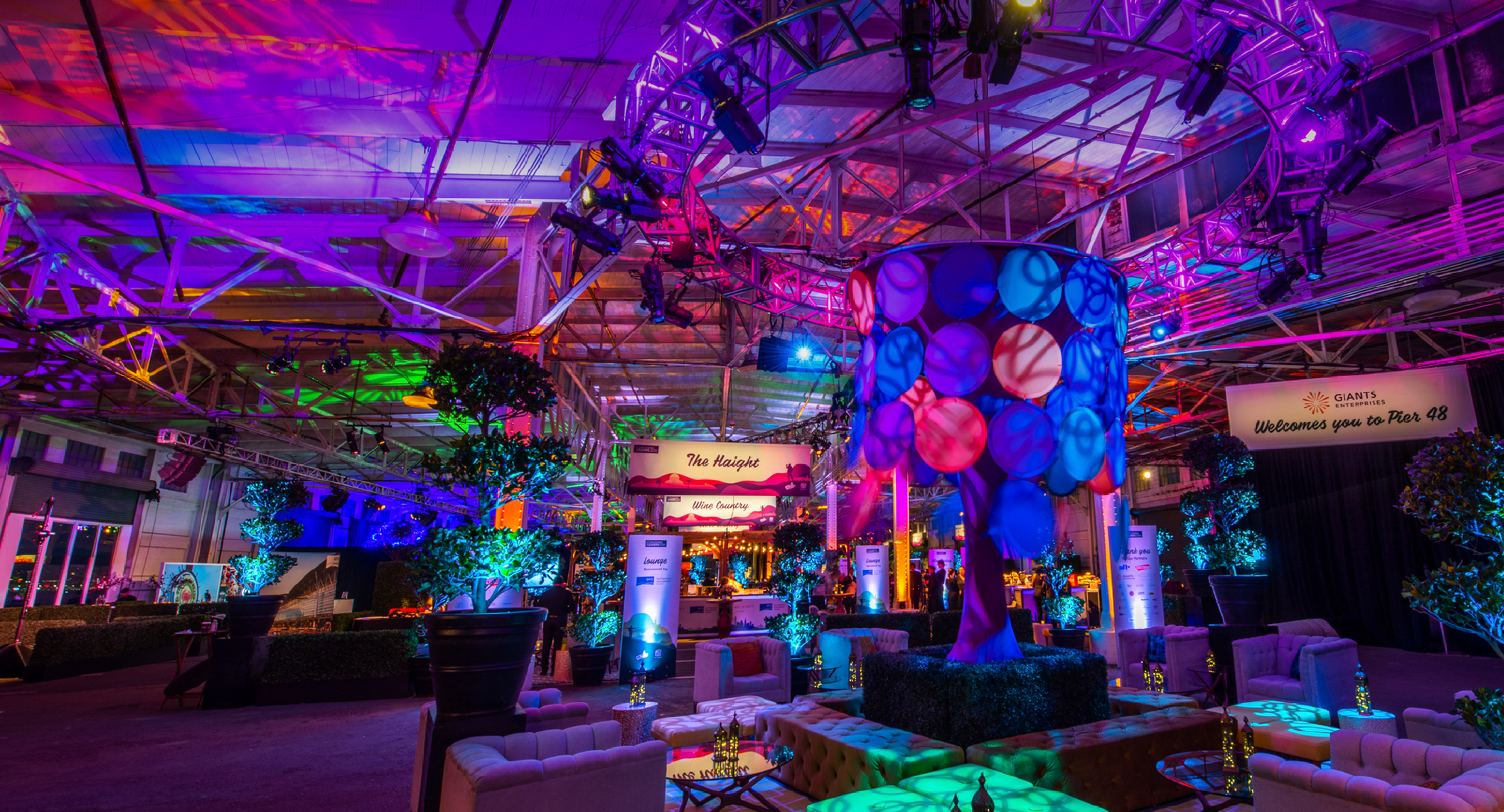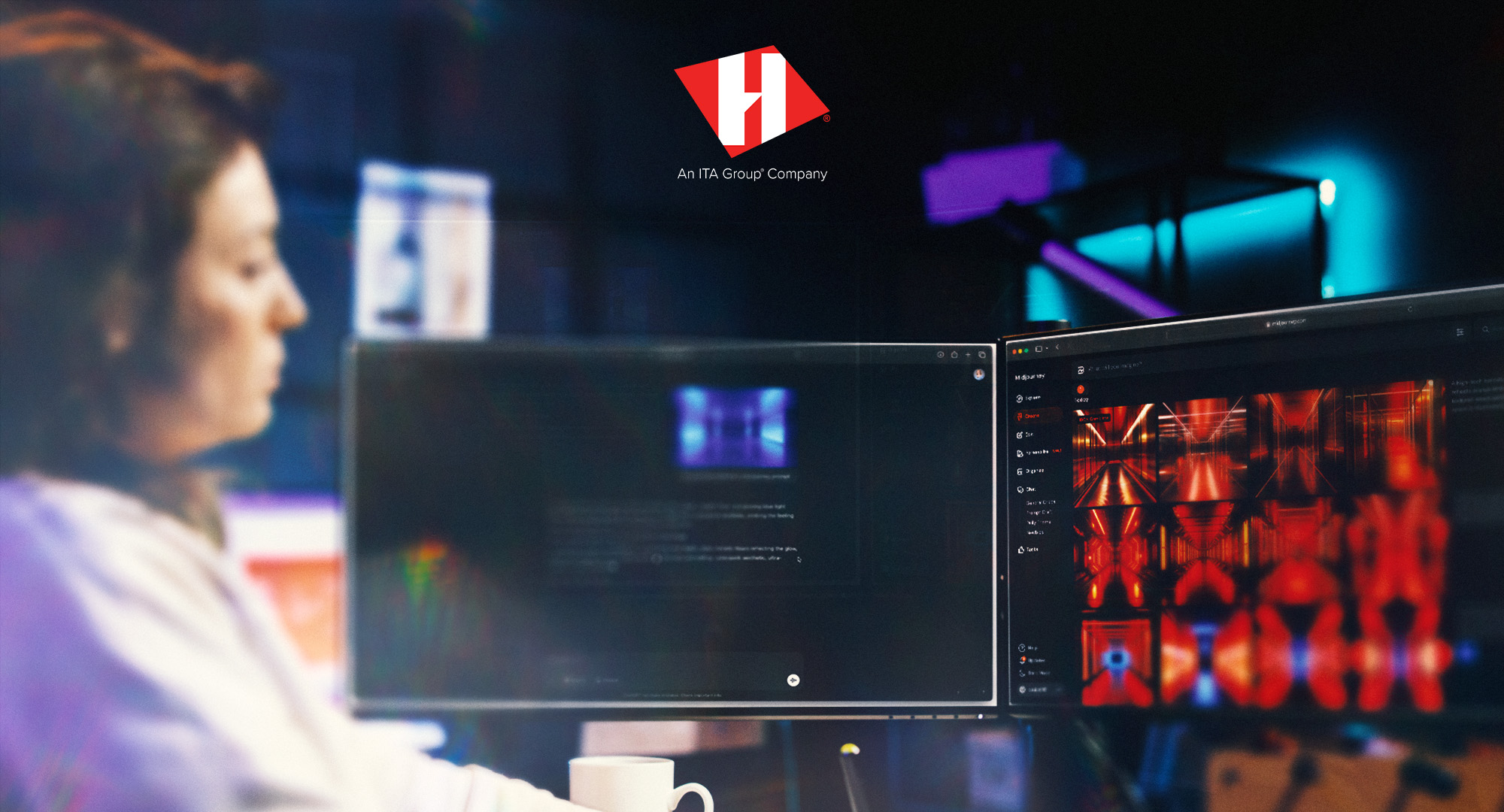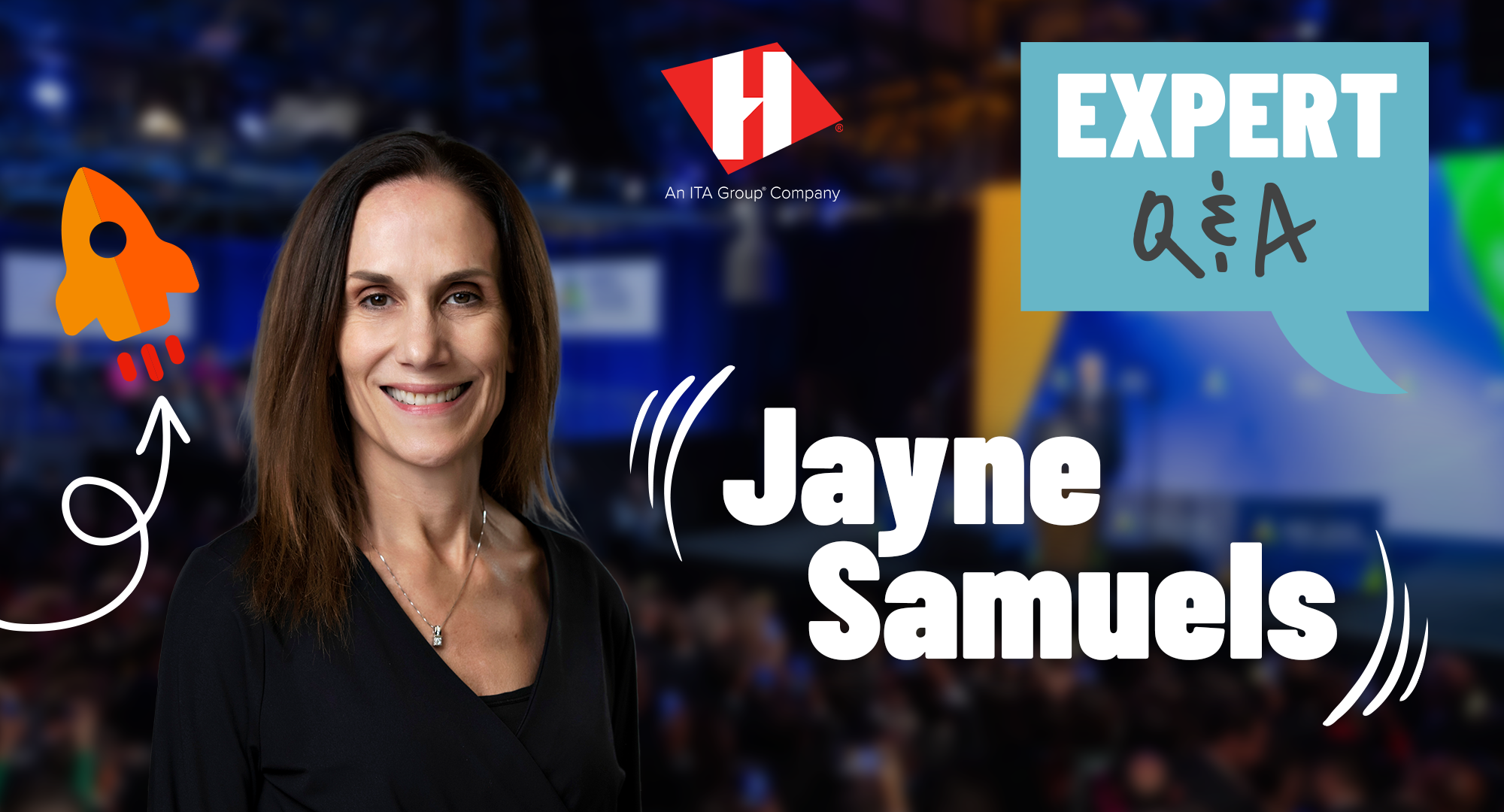Technically Speaking: What’s Behind A Virtual Event
Friday August 21, 2020
5 Min Read
Virtual events are online broadcasts where important messages are presented in new and engaging ways that make lasting impressions. We know because Hartmann Studios has been producing and innovating virtual events for over a decade.
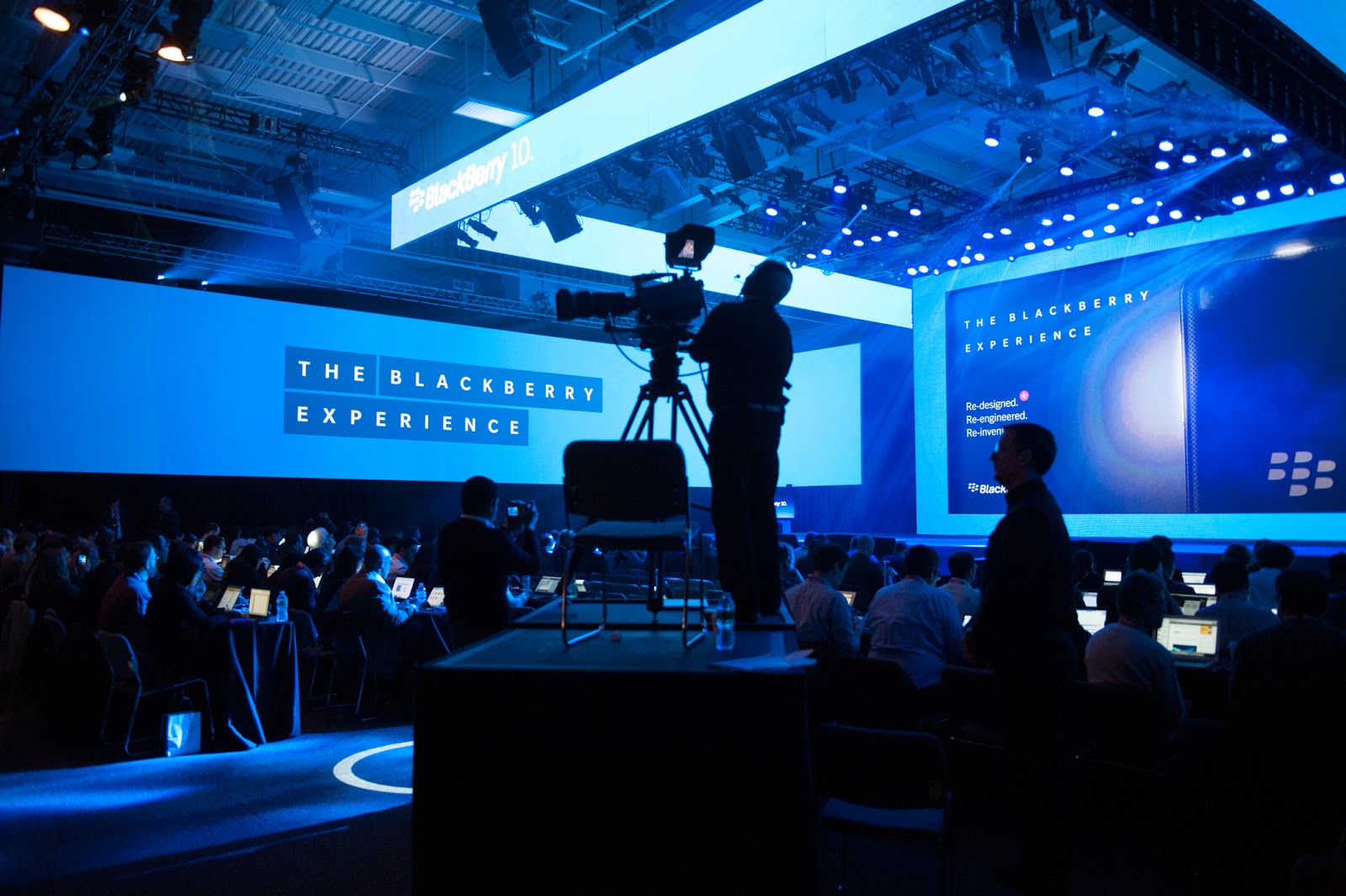
Back in 2012, we got the nod to take a prominent tech brand global. On January 30, 2013, hundreds of journalists, analysts and observers gathered at Pier 36 in New York City to watch the reveal of BlackBerry’s latest products first-hand. Over 80,000 people in six different countries joined them virtually.
Whether an attendee was at the New York studio, or they watched from Paris, London, Johannesburg or Toronto, among many more locations, every person had the same experience thanks to an expertly crafted tech setup that included live multi-camera television coverage, dynamic scenic and environmental design, sophisticated graphic and video production, and the latest digital streaming technology.
Since then, we’ve been producing and managing virtual events for many of our Fortune 500 clients, including Samsung and The Home Depot.
In fact, just two weeks ago we got the news that one of our client’s annual in-person meetings—attended by thousands of people and something we’d been working on for the past 12 months—needed to quickly become a virtual event due to the COVID-19 pandemic.
Our team snapped into action to thoughtfully and strategically transition the event to an impactful and engaging virtual experience.
- We designed and built studio-style scenery that set the virtual stage for executive presentations, differentiating this new experience from the original live conference.
- We put into place a video graphics system that could handle multiple sources on screen at one time so that we could marry the presenter image with their speaker support. This gives an upleveled finish to the final product vs. simply cutting back and forth between presenter and PowerPoint slides.
- We also provided video playback capabilities to allow seamless roll-ins that added an entirely different layer of content delivery than what was happening on the main stage.
We’re proud of how quickly the plan came together, but it couldn’t have happened without a team that’s done this many, many times before.
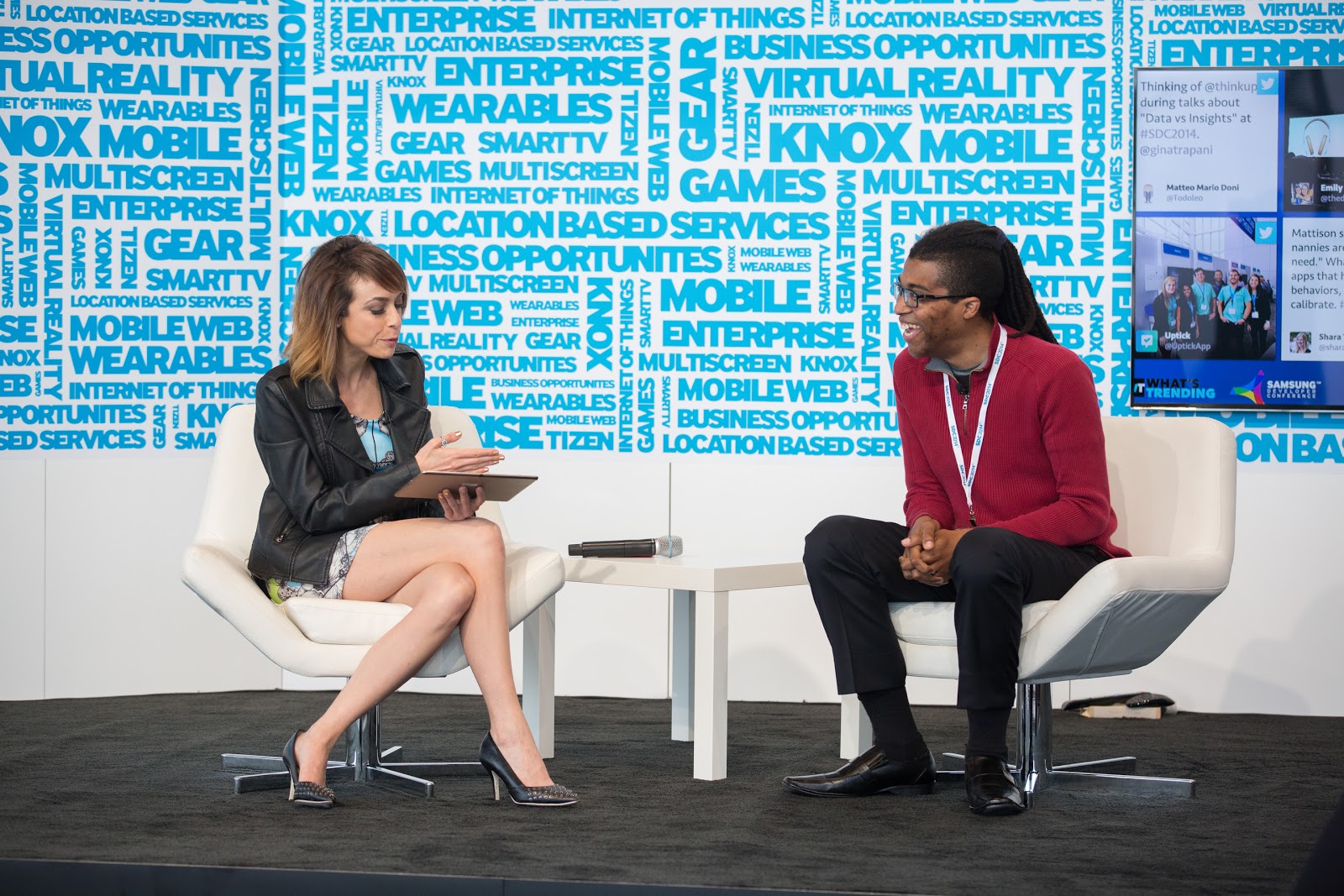
Due to COVID-19, we’re seeing a tremendous number of virtual events, meetings and conferences pop up. If you’re producing one, we’d love to share some of the things we’ve learned over the past 30+ years in the industry about using technology to deliver an engaging event. In the meantime, here are a few technical considerations:
Robust live events (virtual or otherwise) wouldn’t be possible without a full suite of technologies
Technology is an ever-changing, increasingly sophisticated and complex aspect of our lives—and of virtual events.
From A/V engineering, theatrical lighting, a myriad of playback machines, graphics systems for presentation support, prompting, to digital programmable communication systems for crew members… it can be a lot.
That’s where experience comes in. You really have to understand these things in order to prioritize and apply the right equipment and capabilities for a successful program.
Consider distribution carefully
One of the most powerful aspects of virtual events and conferences is how you can distribute the content. In-the-moment live streaming, on-demand viewing, and combinations of both, allow audiences increasingly convenient ways to access programming, and also affect the production decisions we need to make.
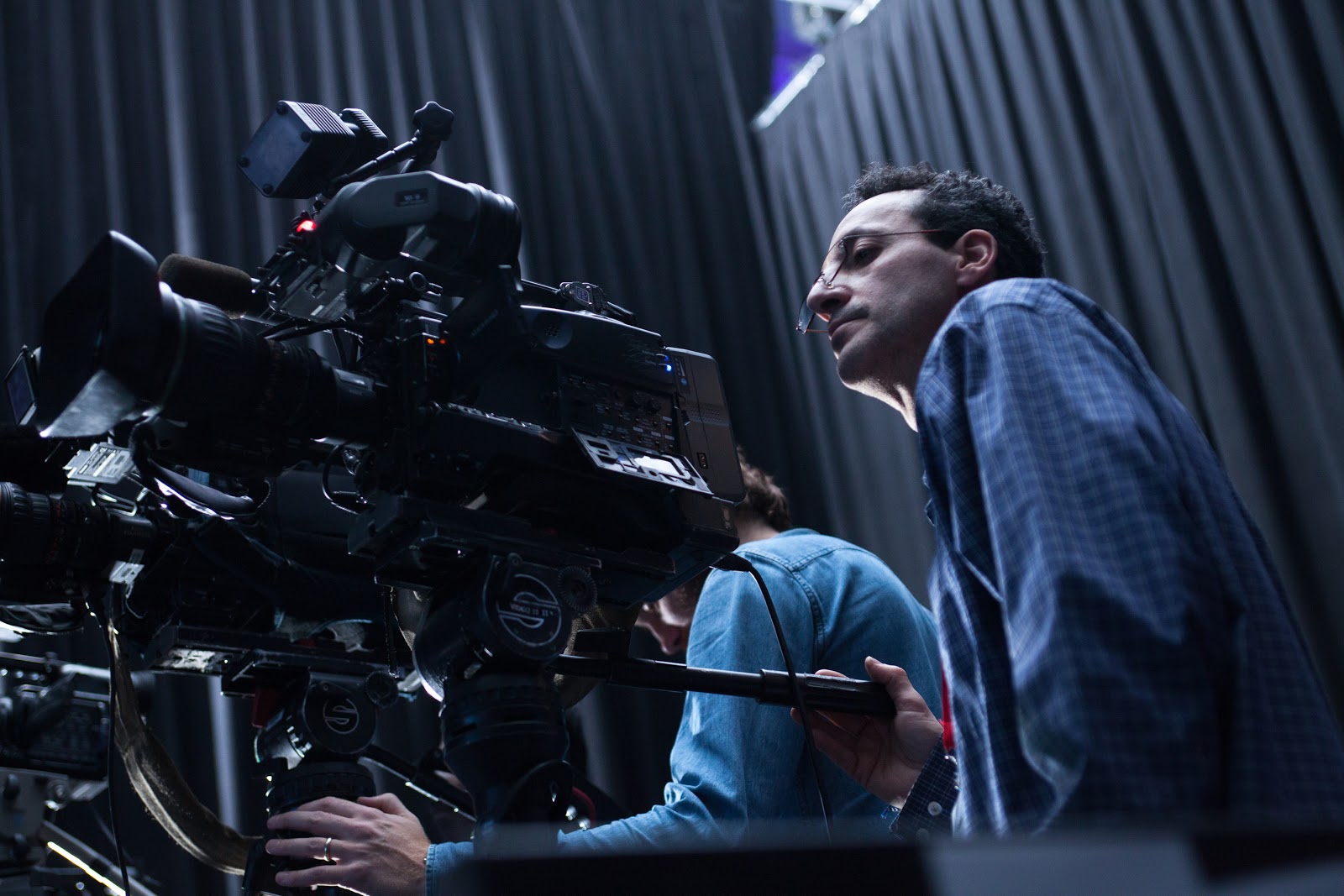
For instance, when we’re creating an on-demand option, we can engage post-production tools to enhance the final product beyond the live capture with video and audio finishing tools. This allows us to approach the recording a bit differently than when we are only delivering the content live. It also changes how we will package the content to be sent to viewers depending on the tools used and our client’s needs.
Considerations include:
- Location bandwidth
- Streaming rates
- Latency
- Redundant systems
- Composition/layout of virtual meeting players
- Virtual scenic requirements
- Interactive communication with attendees
- Audience-shift coaching for presenters
- On-demand shelf life
Sound is more than half the picture
This is a bit in the weeds, but it’s something that many of us are pretty passionate about: proper sound capture.
There’s an old saying in the filmmaking business, “Sound is more than half the picture.”

We’ve all had the experience of watching a TV show, movie or live sporting event where we can’t properly hear or read captions about what’s happening. It ruins the experience—it’s distracting and more than just a little frustrating.
The same goes for a virtual presentation—if the audience can’t clearly hear what the presenter has to say, the event is a bust.

Having experienced technical staff behind the scenes is the best way to be sure your program sounds great and is free of any audio issues. At minimum, have a quality-control broadcast audio engineer on the team starting with rehearsals, all the way through the show date(s). If something needs to be addressed with the virtual meeting audio, the response time to fix the problem shortens dramatically.
When we produce virtual events at Hartmann Studios, we always have a broadcast sound engineer present on the team. That’s just one of the many tech elements we manage thoroughly. Other important elements include:
- Performing broadcast pretests
- Installing redundant content systems at the broadcast locations
- Securing licensed audio
- Assessing the aspect ratio and legibility of all content and media
- Setting up local and cloud-based data records
- Implementing real-time monitoring for the outbound broadcast
Let’s go virtual
There are many more technical aspects to virtual events, but this should give you a glimpse of our scope of technical capabilities.
Today, we are seeing organizations that need to take their remote communications to the next level. And with all of the digital tools at our disposal and our seasoned team, we are well-positioned to make a virtual event your primary means of communication to a remote audience.
If you’re in need of a partner for your next virtual event or conference, get in touch with Hartmann Studios. We produce uber-engaging experiences that maximize messaging retention and will move your audience to action.
Read more stories
View AllAll Posts
4 Ways Environmental Designers Support Creative Event Production
Event design draws us out of our everyday environments. Dynamic displays, scenic builds and dramatic stages capture the audience’s attention. Customized spaces come together thanks to the behind-the-scenes talents of environmental designers. These solution-oriented event production experts believe great event design shouldn’t just look incredible. Thoughtful design elements open minds and promote interaction. Here are...
4 Min Read
All Posts
Elevating Event Production with AI Tools
As artificial intelligence (AI) emerges as a redefining force in creative event production, curiosity is key. Experimenting with prompts helps Hartmann Studios’ production designer, Greg Sullivan, leverage industry-disrupting tools to inspire and streamline his work. He’s defined his dynamic career around constantly learning to meet the next wave of technological advancements. In the mid-1990s, when...
5 Min Read
All Posts
Engaging Main Stage Production with Jayne Samuels
What you need to know Jayne Samuels’ background as a performer informs her approach to event production. A former dancer, she embraces the complex choreography of staging corporate events as a fun, fast-paced challenge. As an executive keynote producer, Jayne leads dozens of team members toward achieving event visions that entertain and inspire audiences. She...
5 Min Read

